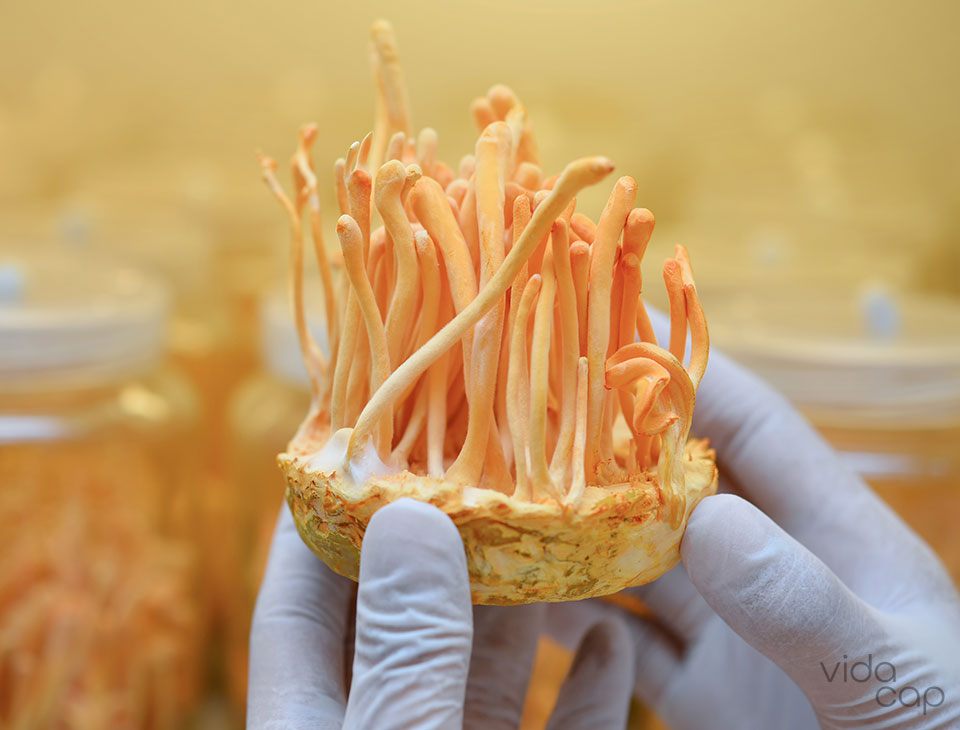
How to Prepare Amanita Muscaria: Beginner’s Guide
 Audrey Ferguson |
Updated on: May 15, 2024
Audrey Ferguson |
Updated on: May 15, 2024
Amanita muscaria, also known as fly agaric, has a reputation as a poisonous toadstool. However, it is rarely deadly, and when cooked in a specific manner, it becomes completely safe to consume.
In some cultures, this mushroom is considered a delicacy; in others, it is used for shamanic purposes. Whether it becomes a tasty treat or a psychoactive sacrament depends on the preparation method.
Here’s what you need to know, including how to cook Amanita muscaria and how to prepare it for its mind-altering effects.
Is It Safe to Eat Raw Amanita Muscaria?
Does Amanita muscaria need to be cooked? The answer is a resounding “yes.”

The raw mushrooms are toxic and can cause unpleasant side effects like diarrhea, vomiting, salivation, and sweating. Therefore, it is inadvisable to consume Amanita muscaria in its natural state.
However, many cultures have developed ways to consume these mushrooms safely and even benefit from their unique effects.
Can You Eat Amanita Muscaria Cooked?
Cooking Amanita muscaria makes it edible, and in some parts of Japan, it is considered a delicacy. For example, in Sanada, a small rural town nestled in the mountains, residents regularly eat pickled fly agaric as part of their New Year’s celebrations.
In Japan, the mushrooms are known as beni tengu take. Beni means “red,” while a tengu is a flying goblin with an oversized nose. Take simply means “mushroom” and is seen in the names of many mushrooms commonly used in Japanese cuisine, such as shiitake, maitake, and so on.
Amanita muscaria is also used by individuals seeking its euphoric effects, in which case its preparation is slightly different. We will explain both Amanita muscaria cooking methods below.
How to Make Fly Agaric Safe to Eat
For those who want to eat Amanita muscaria without psychoactive effects, it is necessary to remove the relevant chemicals from the mushrooms. Because the chemicals are water-soluble, this involves boiling the mushrooms and throwing away the cooking water.
In Sanada, the traditional way of preparing the mushrooms involves boiling them for an average of 10 minutes and then discarding the water. Some people repeat the boiling and discarding process up to three times.
The mushrooms are then rinsed under running water for 1-3 minutes before being packed in salt for a month. Finally, the mushrooms are soaked in fresh water for several hours to remove the salt. The pickled Amanita muscaria is then eaten as an hors d’oeuvre or mixed into stir-fries or rice dishes.
The pickling process has been shown to remove all psychoactive compounds from the mushrooms and make them safe to eat. Alternatively, some people grill the mushrooms or dry them and use tiny amounts as seasoning. However, these methods are less reliable than pickling, and consuming too much could cause side effects.

How to Prepare Fly Agaric for Psychoactive Use
Depending on what you want to achieve, there are different ways to prepare Amanita muscaria for psychoactive use.
The raw mushrooms contain a chemical called ibotenic acid, which is what makes them toxic and unpleasant to consume. However, when they are correctly prepared, it converts to another chemical called muscimol, which is responsible for fly agaric’s desirable effects. This reaction is called decarboxylation.

Some people like to leave some ibotenic acid in the mushrooms as they enjoy the stimulating effects it produces in low doses. In this case, the mushrooms can simply be dried at 158 degrees Fahrenheit (70 degrees Celcius) and eaten in tiny quantities. However, eating larger amounts can increase the risk of unwanted effects and is not generally recommended.
Most people prefer to rid the mushrooms of ibotenic acid altogether. This involves simmering the mushrooms in water for up to 3 hours. Many Amanita muscaria cooking recipes also recommend lowering the pH to 2.5-3 using either citric acid or lemon juice.
After simmering, the mushrooms are discarded, and the infused cooking water can be ingested. Calculating how many grams of mushrooms are in each milliliter of tea is good practice so you know how much each portion contains. To do this, weigh the mushrooms before adding them to the water and then measure the resulting “amanita tea” at the end of cooking.
For example, 100g of dried Amanita muscaria cooked down to 500 ml of liquid means each milliliter would be equivalent to 0.2g of mushrooms. Therefore, a 5 ml dose would be equivalent to 1g. It is best to start with a minimal dose (around half a teaspoon) and observe the effects before consuming more.
Amanita tea can be stored in a refrigerator for up to a week or poured into ice cube trays and frozen for later use.
Don't want to go through the hassle of preparing your own Amanita muscaria?
At VidaCap, we've done the hard work for you. Our Amanita muscaria gummies are an already-prepared way to enjoy Amanita muscaria easily.
How to Prepare Amanita Muscaria: Summary
It is necessary to prepare Amanita muscaria properly before use to make them safe. You cannot easily buy cooked Amanita muscaria, but you can purchase dried mushrooms that you can use to microdose or brew tea. You can now also find products like amanita gummies, which take all the hassle out of preparation.
Well-made gummies will be fully decarboxylated, so they contain plenty of muscimol and just trace levels of ibotenic acid. They should come with lab reports to prove how much muscimol they contain and show they are free from contaminants.
While it might be fun to experiment in the kitchen, amanita gummies offer a far more convenient method of enjoying this misunderstood mushroom.
-
new
 Amanita Muscaria Mushroom GummiesCalm | Mindfulness | Balance$38 Shop now
Amanita Muscaria Mushroom GummiesCalm | Mindfulness | Balance$38 Shop now- Experience a calming and balancing buzz effect.
- 8 Delicious Berry-Mango and Citrus gummies
- 500mg amanita extract per gummy for best results
- Proudly vegan and gluten-free
- Manufactured in the USA with high-quality standards

Audrey has worked as a registered dietitian for 6 years. She graduated from the University of Florida in 2013 with a Bachelor of Science degree. In 2014 she began an internship with the Veterans Affairs Healthcare System, and was hired as an Outpatient Dietitian following graduation. She started her career counseling a variety of patients with different health concerns and disease states. After a few years into practice, she found her passion was working in cancer care, and has spent the last 4 years specializing in oncology nutrition.
In her practice, Audrey has spent a significant amount of time reviewing literature on herbal and dietary supplements in the cancer care setting. Through her work at Vidacap, she hopes to continue to expand her knowledge and understanding of the benefits of supplements in conjunction with promoting a healthy, balanced diet and management of overall health and well being.





